TEST YOUR VALUE PROPOSITION: SUPERCHARGE LEAN STARTUP AND CUSTDEV PRINCIPLES
ALEXANDER OSTERWALDER - Business Model AlChemist
In my last post I described a new business tool, the Value PropositionDesignerCanvas. In this post I outline how you can use the tool to not only design Value Propositions, but also to test them. You’ll learn how you can supercharge the already powerful Lean Startup and Customer Development principles to design, test, and build stuff that customers really want.
The Value Proposition
Designer Canvas (VP
Designer Canvas) allows you to zoom into the details of your Value Proposition and the Customer Segments you target. You can use it as a poster (cf image below) to design better Value Propositions with sticky notes. However, to make sure your customers really want what you design, you’ll need to test all the assumptions you make with the VP
Designer Canvas.

We already now know how to do this kind of designing and testing for business models: by combining the Business Model Canvas with theCustomer Development process. Steve Blank has impressively demonstrated this in his work.

We already now know how to do this kind of designing and testing for business models: by combining the Business Model Canvas with theCustomer Development process. Steve Blank has impressively demonstrated this in his work.
We can achieve the same for Value Propositions by combining the VP
Designer Canvas with the Lean Startup process. This will help us more systematically work towards achieving what the startup movement calls a product-market fit or problem solution fit. In other words, building/offering stuff that customers really want.
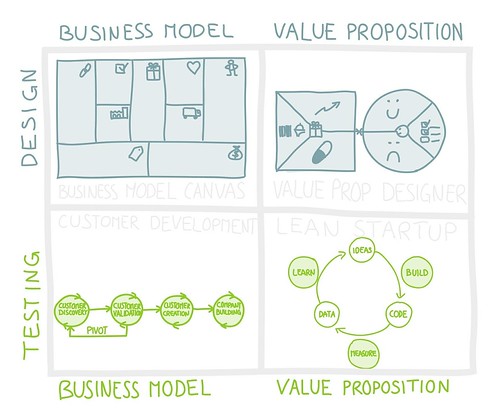
In a nutshell, the Lean Startup process essentially consists of iterating through the “building” of, “measuring” of, and “learning” from product (and service) prototypes. The Lean Startup movement calls these prototypes Minimum Viable Products (MVP).
Supercharge the Lean Startup Process
The VP
Designer Canvas can add two crucial things to this process that are currently missing. Adding them to the mix will bring us to a whole new level.
Firstly, the VP
Designer Canvas gives you a simple and practical way to rapidly sketch out WHAT you are building and how you believe this will create customer value/benefits, as well as WHY your are building it: which customer jobs, pains, and gains you intend to address.
Doing this BEFORE building an MVP, will help you better track and manage the testing, measuring, and learning process.
Secondly, the VP
Designer Canvas helps you distinguish between Product/VP and Customer assumptions. If you “just” build an MVP to measure and learn, you won’t know if a negative outcome of your experiment is related to your MVP or to a lack of customer interest.
In science such a significant bias would invalidate your results all together. Hence, you need to separate the testing of your product/VP assumptions (i.e. WHAT) and your customer assumptions (i.e. WHY) whenever possible. The latter is something you can observe and investigate even before designing an MVP.
Using the Value Proposition Designer Canvas – Step by Step
Let me walk you through a rough step by step process of how to use the VP
Designer Canvas for testing. In reality, of course, these steps will be less sequential and much more messy. You’ll also want to adapt this process to your needs and circumstances.
1. Fill Out Your VP Designer Canvas.
Describe the JOBS your customer is trying to get done and outline their PAINS and GAINS. List the PRODUCTS and SERVICES you intend to offer and describe how you believe they will ALLEVIATE your customer’s PAINS and CREATE GAINS. You can use the trigger questions in theposter and in my last blogpost if you need help.
Voilà, you now have a great list of Produc/VP and Customer assumptions. You described who you think customers are and what you think would create value for them. It’s your best guess – but still just your (smart) opinion.
2. Test your Customer Assumptions
Now it’s time to “get out of the building” – to use Steve Blank’s terms – in order to verify your customer assumptions. Talk to as many (potential) customers as possible to verify if they really are trying to get those JOBS done that you described in the VP
Designer Canvas. Find out if those JOBS are crucial to them or unimportant? Find out if the really have those PAINS you believed they have. Are those PAINS severe or minor? Verify if they really value the GAINS you believed they value.
It’s even better if you can test your customer assumptions more rigorously. What I mean with that is going beyond simply talking to customers, but not yet building an MVP. The design professions have several techniques to achieve that.
3. Adjust your Customer Assumptions Based on Insights
Now that you better know who your customers are you should revisit the Customer Profile in your VP
Designer Canvas. Ideally you now understand the significance of your customers’ JOBS, the severity of their PAINS and the intensity of their desired GAINS.
4. Redesign your Value Proposition Based on Insights
Adjust which pains and gains you want to focus on, based on your customer insights. Then redesign your Value Proposition accordingly. Don’t forget that great Value Propositions rarely address all customer PAINS and GAINS. They address a few really well!
This will give you a readjusted VP
Designer Canvas.
5. Start Testing your Value Proposition
Now it’s time to build your MVP and continuously test and adjust your Value Proposition based on what you learn.
The VP
Designer Canvas will serve as your map to permanently track assumptions and tests, while you’re pivoting through the Lean Startup process. The moment this circle ends is when you’ve achieved a fit between your Value Proposition and what your Customers expect. This is what the startup movement calls product-market fit or problem-solution fit. It’s when you build stuff that customers really want!
Don’t hesitate to give me your feedback, since this process is just a first suggestion of how to use the Value Proposition
Designer Canvas.
 9:09
9:09
 Juan MC Larrosa
Juan MC Larrosa


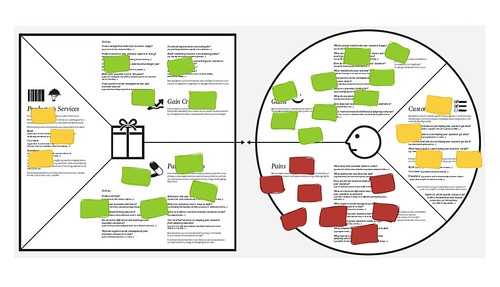
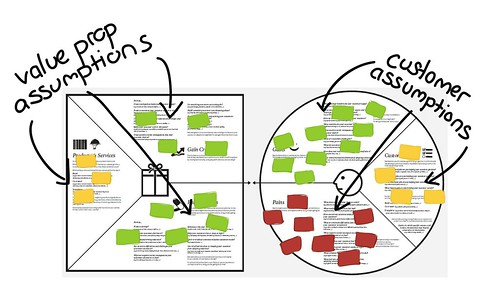
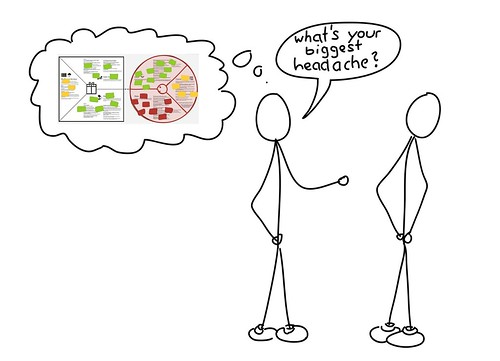
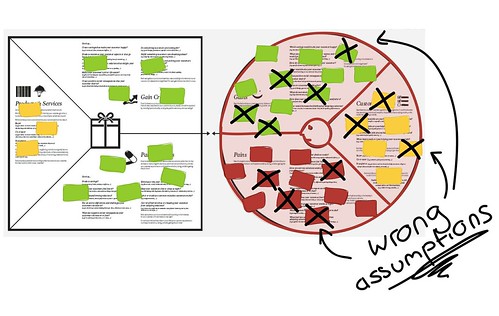
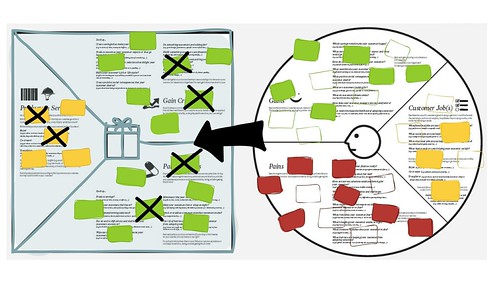

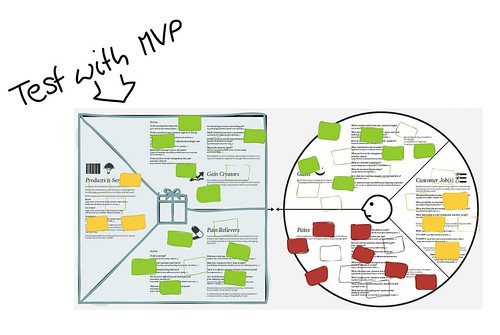

 Posted in:
Posted in: 












0 comentarios:
Publicar un comentario